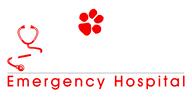Pharmacy & Pharmacology
Therapeutics:
Anesthesia:
- Knowledge of appropriate routes, methods of action, and uses, contraindications, synergisms, and clinically relevant side effects of common drugs
- Demonstrate an understanding of controlled substance regulations
- Demonstrate compliance with all federal and state regulatory guidelines for: storage, administration, withdrawal, dispensing, disposal, and inventory control (IE- biologics, therapeutic agents, compounded medications, pesticides, and hazardous wastes)
- Ability to recognize drug reactions and demonstrate appropriate medical response and treatment
- Recognize and assess body language and behaviors (including pain assessment scales)
- Ability to accurately assess patient status and perform primary survey
- Ability to triage and prioritize patients based on clinical status
- Demonstrates ability to recognize critical/ catastrophic emergency
- Adequately explains critical need to client and presents plan/ estimate for immediate stabilization
- Assesses for, recognizes, and treats shock
- Obtain thorough patient history
- Demonstrate ability to obtain objective patient data:
- *Auscultate heart and lungs
- *Recognize abnormal heart sounds, rate, rhythm, murmur
- *Recognize abnormal lung sounds, characterize breathing effort as normal or abnormal
- *Characterize respiratory abnormalities and localize the problem
- *Recognize and treat respiratory distress immediately
- *Assess pulse quality and perfusion
- *Basic neurologic exam
- Level of consciousness, AVPU scale
- *Perform and document thorough nose to tail PE findings using hospital template
- Recognize normal vs. abnormal findings and clinical significance
- Accurately assess hydration status
- Orders appropriate diagnostics based on patient evaluation
- *Applies clinical knowledge to justify diagnostics based on how results may alter/affect course of treatment
- *Understand minimum database
- *Perform venipuncture: cephalic, saphenous, jugular
- *Collect urine sample: male and female dog and cat catheterization, cystocentesis
- *Ability to assess radiographs and interpret findings
- Recognition of normal vs. abnormal
- Recognition of need for STAT radiologist review
- Adequately evaluates cytological samples
- Understands microscope operation and maintenance procedures
- Utilize ultrasound: AFAST, TFAST
- Ability to perform diagnostics and therapeutic centesis
Therapeutics:
- Orders therapies appropriate for patient condition
- *Creates estimates and presents treatment plans to owners
- *Ability to provide timely and accurate patient orders in writing
- *Ability to create ICU treatment sheet
- *Determine best route of administration for medications
- *Calculate appropriate fluid rates for maintenance, replacement, and shock
- *Dictated appropriate monitoring for hospitalized patients
- *Recognizes compatibility issues with potential prescribed medications
- Perform ocular diagnostic testing- tonometry, fluorescein staining, Schirmer tear testing
- *Recognize ocular emergencies
- *Collect/ evaluate cytologic samples- knowledge of appropriate aspiration and other collection methods
- Fluid Therapy:
- *Calculate appropriate fluid boluses
- *Determine appropriate fluids for patient
- *Determine appropriate fluid infusion rate
- *Monitor patient hydration status
- *Auscultation for and recognition of normal vs. abnormal in relation to fluid administration- recognition of fluid overload
- *Recognizes PE findings that may change with over or underhydration
- *Recognize fluid overload and institute appropriate treatment
- Understanding Wound Management and Abscess Care:
- *Appropriately addresses wounds
- *Appropriate cleaning, debriding, and closure
- *Understands importance of timeliness when addressing wounds
- *Demonstrates appropriate tissue handling techniques
- *Ability to select appropriate suture type and pattern
- *Ability to select and place appropriate drains vs. when not needed
- *Knowledge of bandaging and splinting techniques
- Place and maintain chest, tracheostomy, esophagostomy, and nasoesophageal tubes
- Collect and crossmatch blood for transfusion: Knowledge of when crossmatch is indicated
- Blood typing
- Determine appropriate blood products based on condition (pRBC’s, whole blood, FFP, frozen plasma)
- Perform blood transfusions
- Recognize transfusion reactions and demonstrate appropriate response and treatment
- Apply established emergency protocols
- *Awareness of medical supplies/ crash cart functionality
- *Knowledge of RECOVER BLS and ALS guidelines
- *CPR cycles
- *Emergency drug doses
- *Ability to delegate and coordinate during a “code”
- *Order appropriate drugs
- *Intubation/ oxygenation
- *ECG interpretation- indicators of effective compressions
- *Use resuscitation bag
Anesthesia:
- Assess the patient’s risk status and determine appropriate anesthetic and perianesthetic protocols
- Calculate dosages of appropriate anesthetic-related drugs
- Administer anesthetic-related drugs (injection, ET tube, mask)
- Place ET tubes in patients
- Utilize clinical signs and appropriate equipment to monitor patient status during anesthetic procedures (esophageal stethoscope, BP monitor, capnometer, ECG, pulse ox)
- Evaluate patient and implement pain management protocols as directed.
- Recognize and respond appropriately to patients in compromised states
- Perform appropriate resuscitation procedures as needed
- Maintain and operate anesthetic delivery and monitoring equipment:
- *Pulse oximeter
- *Capnometer
- *Esophageal stethoscope
- *Electrocardiograph- recognize abnormal rhythms/ audible sounds, properly apply leads
- *Anesthetic machines, including rebreathing systems, non-rebreathing systems and masks
- *Endotracheal tubes
- *Resuscitation bag
- *Scavenging systems
- *Oxygen sources
- *Blood pressure monitoring devices
- *Laryngoscopes
- *Ventilator
- Accurately assess patients and assign ASA score; discuss any additional anesthetic risks based on scores with owners prior to proceeding with surgery
- Recognize situations where emergency surgery is warranted and inform owners of diagnosis, prognosis, possible complications, and estimated costs in a timely fashion
- Stabilize patients as appropriate pending surgery- trocarisation for GDV, fluid boluses where needed, emergency management of blood loss, relieving urinary obstructions
- Appropriate suture selection and tissue handling depending on organ system(s) involved in procedure
- Ability to perform surgery while managing patient care under anesthesia per updates from anesthesia technicians
- Specimen Management
- *Understand how to ensure safety of patients, clients and staff in collection and handling of samples
- Tasks
- *Perform microscopic exam of blood film
- *Prepare film and stain
- *Perform leukocyte differential- normal vs. abnormal
- *Evaluate erythrocyte morphology- normal vs. abnormal
- *Estimate platelet numbers
- *Calculate absolute values
- *Correct WBC counts for nucleated cells
- *Calculate hematologic indices
- *Coagulation tests
- *Buccal mucosal bleeding time
- *PT/ PTT
- *Perform blood chemistry tests
- *Perform serologic tests
- *Identify blood parasites
- *Perform parasitological procedures for external parasites and identify different types
- *Perform diagnostic procedures for parasites
- *Identify common parasitic forms
- *Perform coprological tests
- *Perform microbiologic procedures/ evaluations
- *Perform cytologic evaluation
- *Perform FNA and impression smear; differentiate benign vs. malignant
- *Collect, prepare, and evaluate transudate, exudate and cytologic (joint, CSF, airway, body cavity)
- *Collect, prepare, and evaluate ear cytology
- *Collect, prepare, and evaluate skin scrapings
- *Perform necropsy procedures
- Ability to position animals to produce appropriate diagnostic radiographic images using topographic landmarks
- Perform radiographic contrast studies
- *GI series if indicated
- *Pneumocystogram
- Ability to maintain proper and complete medical records. Write comprehensive medical records, documenting physical exam findings, laboratory, and radiographic results, administered drug doses, etc.
- Ability to accurately record all surgical procedures
- Ability to ensure all pertinent client conversations and communications are recorded appropriately
- Client Communication
- *Ability to effectively communicate findings and recommendations to clients in a clear and understandable manner
- *Ability to deliver difficult news to clients in a timely and sensitive fashion
- *Ability to receive criticisms from clients and attempt to mitigate anger/ dissatisfaction
- *Ability to communicate with referring community
|
A little bit about me: I am the mentorship coordinator and medical director for the hospital. When I first graduated veterinary school, I had plans to pursue a career in equine medicine. Those plans didn’t work as I had hoped, and I found myself in an associate position at a small animal hospital with no clue what I was doing! Luckily, my first boss was an excellent teacher and in my first week of practice, he had me assisting him on various surgeries including GDV and cystotomy.
|
I made the transition to working as a full-time ER doctor over 8 years ago and, once again, I found myself surrounded by brilliant doctors ready to help me and teach me how to manage these more critical emergency cases. I will never forget how this coaching made things seem so much less daunting and those memories were the catalyst behind starting this mentorship program. If you choose to apply for one of the mentorship positions at our hospital, I consider it my privilege to spend the next 6-9 months helping you build the tools you need to approach any problem in practice as well as the foundations for how to take care of yourself in a profession that is growing more challenging by the week. In the following pages you will find our mentorship program outline, which will help give you an idea of what you would be learning at AEH throughout your mentorship. After you have been in the ER field for 3 years, we can also mentor you for ABVP Certification. This program is a great option for those who aren’t ready to pick a specialty right after vet school for those who develop their passion for emergency medicine after practicing for several years. This is also a great option for those who want to become board certified but are not interested in pursuing an internship! I would love the chance to speak with you via email or zoom to answer any questions you may have, and we are always welcome to in person visits as well. If after reading through this you interested in learning more, please reach out!
Want more information about a career @ AEH?


